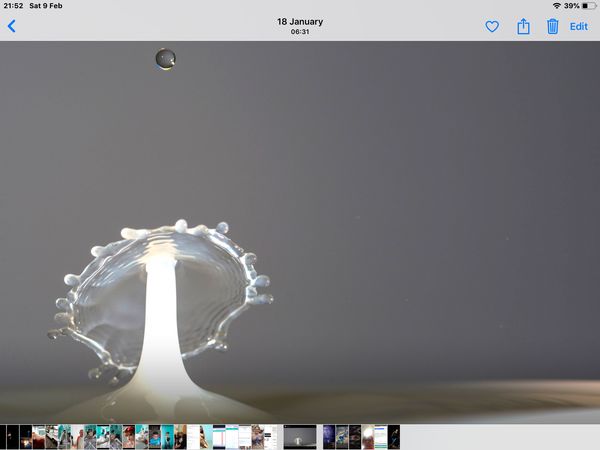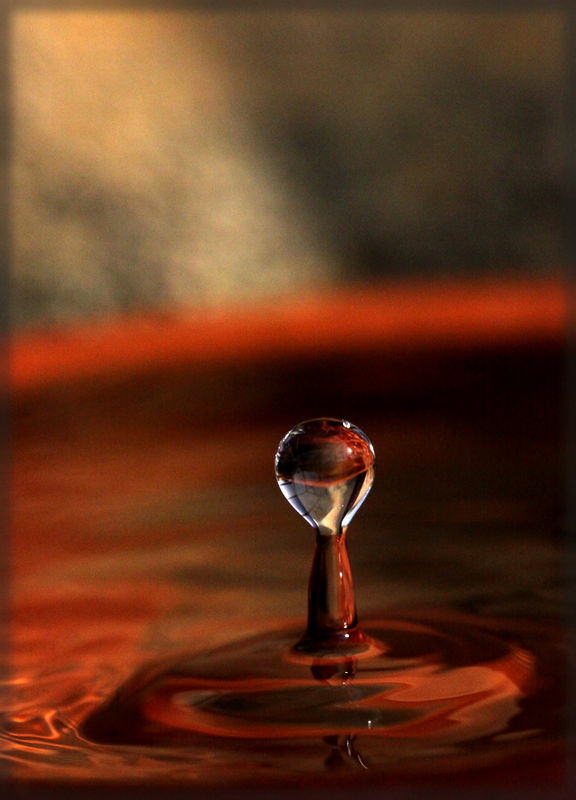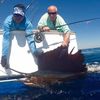Macro Lens (Fast vs Slow)
Feb 9, 2019 16:17:31 #
SteveG
Loc: Norh Carolina
What camera are you using? Just about any can give you pretty good results even at higher iso settings
Feb 9, 2019 16:32:45 #
marty wild wrote:
Please help me out with the images are they classed as macro or close up?
Those images are not mine so I don't know how large the flower is but I suspect that they are closeups, they were taken from the "Digital Picture" were they were used to illustrate the difference in the quality of background blur at different focal lengths while the size of the subject remained constant.
If on the other hand you are wondering if I have macro cred..... Here is a Grey Wall Jumper that should establish my creds.
Feb 9, 2019 16:35:02 #
Fabulous
Blurryeyed wrote:
Those images are not mine so I don't know how large the flower is but I suspect that they are closeups, they were taken from the "Digital Picture" were they were used to illustrate the difference in in the quality of background blur at different focal lengths while the size of the subject remained constant.
If on the other hand you are wondering if I have macro cred..... Here is a Grey Wall Jumper that should establish my creds.
If on the other hand you are wondering if I have macro cred..... Here is a Grey Wall Jumper that should establish my creds.
Feb 9, 2019 16:38:40 #
marty wild wrote:
Fabulous
Thanks Marty, to be honest that is way beyond what a macro lens alone can do, it was taken with a reversed 28mm lens on a full set of tubes which yields something close to 4:1 magnification.
Feb 9, 2019 16:54:47 #
Here is my macro entry
Blurryeyed wrote:
Thanks Marty, to be honest that is way beyond what a macro lens alone can do, it was taken with a reversed 28mm lens on a full set of tubes which yields something close to 4:1 magnification.
Feb 9, 2019 16:55:19 #
Feb 9, 2019 18:14:42 #
Nice, what do you have going on with the liquid there? I have shot water drops before but never got the mushroom look, I was simply using water in a bowl. Nothing fancy but I do like the refraction in this image. If I remember right using milk or a mixture of milk and water will produce images more like the one you posted.
Feb 9, 2019 18:44:52 #
amfoto1
Loc: San Jose, Calif. USA
MechEng wrote:
... b The slower lenses tend to be zoom lenses (bu... (show quote)
Hi Andy,
Right up front, there are NO true macro lenses that are zooms.
There are many zooms with a "macro" label on them, but they don't actually do as high magnification as a true macro lens can.
The best zoom with macro I know of is the Canon EF 24-70mm f/4L IS USM... it has a macro setting that allows up to 0.70X magnification, nearly 3/4 life size.
The vast majority of zoom lenses with a macro label actually only do 0.25X to 0.35X magnification. That's only 1/3 to 1/2 the magnification of that Canon zoom and only 1/4 to 1/3 life size. Far from actual "macro".
But most people define "macro" as 1:1 or 1.0X magnification... or 100% life size. There have been 1:2 or .50X magnification macro lenses over the years, usually with matching accessories that allow them to do full 1:1.
The first thing I'd suggest... forget zooms. Look for a prime macro lens instead (i.e., not a zoom). The image quality and overall performance will be better, plus it will very likely have higher magnification.
There are a lot of good quality, true macro prime lenses available. All I know of are capable of making excellent images. That's the least of your worries. It's more the other features of the lenses that set them apart.
I see you are using a Canon T6i camera. For use on that camera, you have a lot of choices.
I recommend a macro lens in the range from 60mm to 105mm for use on an APS-C camera. These are good "general purpose" macro focal lengths... not so short that you are right on top of the subject, but also not so long that the lens is difficult to hold steady. Longer macro focal lengths also render very shallow depth of field, which might force you to use smaller apertures which may compound the problem by causing you to use slower shutter speeds.
Don't worry too much about the lens' max aperture. You will almost always be stopping down a macro lens in search of some depth of field. One exception.... if you also want the lens to serve other purposes, you might want a larger aperture.
That said, you still have a lot to choose among. Canon themselves offers a number of excellent macro lenses. Plus there are Tokina, Tamron, Sigma and others.
Some "general purpose" macro lenses....
Canon EF-S 60mm f/2.8 USM is a very compact option. It is a "crop-only" lens and costs $400 (plus $27 for the lens hood that's sold separately). Image quality is top notch. This lens has minimum focus distance (MFD) of about 8" at max magnification (1:1). Keep in mind that MFD is measured from the sensor/film plane of the camera, so part of the camera, the lens itself and any accessories attached to the front of it (filters, hood, macro flash) will occupy part of that space and reduce the "working space" between the subject and the front of the lens or accessory. The USM focus drive this lens uses allows you to manually override the autofocus at any time, without having to first turn the AF off at the switch on the lens. (A lot of macro work involves manual focusing... it's often easier than using AF). USM focus drive is also fast... however macro lenses are almost always slower focusing by design. Because of the very shallow depth of field involved, macro lenses usually use "long throw" focus mechanisms which emphasize precision over speed. Some lenses have a "focus limiter" to help speed up focus in some situations, but this lens doesn't have one. This lens is internal focusing (IF), meaning that it doesn't grow longer when focused closer (which would further reduce working space between the lens and subject).
Tamron SP 60mm f/2.0 Di II is another compact, crop-only lens. For use on my APS-C cameras, I chose to buy this Tamron instead of the above Canon lens, because the Tammy has a full stop larger f/2 aperture, which comes in handy for occasional non-macro uses such as portraits. It's an ideal focal length for portraits too. It falls right in between the focal lengths of non-macro Canon 50mm f/1.4 and 85mm f/1.8 lenses I've also often used for portraiture, with my APS-C cameras. It's also an excellent macro lens capable of full 1:1, comes with a lens hood and costs about $525. It uses slower "micro motor" focus drive, which is not fast enough for any sort of action photography, but is fine for portraits and macro. Like the Canon, this Tamron lens does not have a focus limiter. Also like the Canon, it's an internal focusing (IF) lens.
Tamron SP 90mm f/2.8 Di is a full frame capable lens (which works just fine on an APS-C camera, too) with a long history of excellence. There have been many versions since the 1980s and are actually two current autofocus versions of the Tamron 90mm. A cheaper one selling for about $500 uses a slower micro motor focus drive, isn't an IF design (it extends a lot when focused to 1:1 magnification), and it doesn't have image stabilization. It has a simple, 2-stage focus limiter. The Tamron SP 90mm f/2.8 Di VC USD sells for about $650, is an IF lens, uses faster ultrasonic focus drive and has a more sophisticated 3-stage focus limiter. It also has "Vibration Control" image stabilization (more about this below). These 90mm lenses have a minimum focus distance around 11.5" to 12" *(again, measured from the camera's sensor plane). Both the Tamron 90mm come with lens hood.
Tokina AT-X Pro 100mm f/2.8 is one of the least expensive true macro lenses, currently selling for under $350. It's full frame capable, well made and has excellent image quality... but is pretty basic. It uses micro motor focus drive and, like most Tokina lenses, has a "focus clutch". The focus ring of the lens slides slightly forward and backward to switch it between manual focus and auto focus. Because of this design, it does not offer full time override of autofocus, the way most of the other lenses listed here do. To manual focus it, you have to switch out of AF mode. And when it's set to AF mode, the focus ring doesn't do anything. It is not an IF lens. It has a simple 2-stage focus limiter. It comes with a matched lens hood.
Canon EF 100mm f/2.8 USM is an older full frame design that's still in production, selling for $600 right now. It's a highly capable, very well made, Internal Focusing lens with USM (ultrasonic) focus drive and a 2-stage focus limiter. Canon EF 100mm f/2.8L IS USM is a newer version that has Image Stabilization added and a 3-stage focus limiter, on sale right now for $800 (usually $900). The "L-series" designation promises premium quality... but to be honest the less expensive lens has equally good build quality (same design, materials and construction as the Canon EF 180mm f/3.5"L" USM, in fact). The newer L-series lens has a more "modern" look and a matched lens hood is included. The less expensive version doesn't include a lens hood. It's sold separately for about $40 (cheaper 3rd party clones are available). Both the Canon 100mm macro lenses have a Minimum Focus Distance around 12".
Something that sets the two Canon 100mm apart from all other macro lenses around this focal length is that both of the Canon 100s can optionally be fitted with a tripod mounting ring. The older, non-L, non-IS version uses Tripod Ring B (which is also used by and included with the Canon MP-E 65mm and the Canon 180mm f/3.5L USM macro lenses) which sells separately for $150. The 100L IS lens uses Tripod Ring D which sells for $172. Cheaper 3rd party clones of both Ring B and Ring D are available for about $50 (there are even cheaper, but they're plastic and should be avoided).
I've used a Canon 100mm f/2.8 USM for years with the Tripod Ring B. It's a very helpful accessory. (I also use the MP-E 65mm and 180mm f/3.5L macro lenses, so I actually have three lenses using that tripod ring.)
Sigma 105mm f/2.8 EX DG OS HSM is a full frame capable macro lens currently on sale for $569 (regular price $969, making it the most expensive normally). It's Internal Focusing, uses HSM ultrasonic focus drive, has a 3-stage focus limiter, and has Optical Stabilization image stabilization. I suspect the reason they are discounting it so much is there's a new "Art" version in the works and they clearing the shelves of the older model in advance of releasing that. They've also recently re-introduced a Sigma 70mm f/2.8 DG macro lens, now an "Art" model. I'm not familiar with this new version, but it appears to use a slower micro motor focus drive and doesn't have OS (stabilization). It does have a 3-stage focus limiter. The Sigma 105mm has approx. 12" MFD, while the 70mm has about 10" MFD. Both lenses come with matched lens hoods.
Several of the above lenses have image stabilization (Canon IS, Tamron VC, Sigma OS). Be aware that this is less effective at highest magnification (1:1 with all the above lenses). It is more effective when using the lens for non-macro purposes. I haven't used them all and compared them myself, but supposedly the Canon IS on the 100L is the most effective... but even it's limited when using the lens at it's highest magnification. Personally I think a tripod mounting ring is a better feature to have with a macro lens.
There are also a number of manual focus only macro lenses in the 60 to 105mm focal length range, from Zeiss, Samyang/Rokinon and others. Often macro is more easily done using manual focus anyway. However you need to be cautious because some of these lenses are also manual aperture control only. This makes the lens much slower to work with and more difficult to manually focus, because your viewfinder dims down when the lens is stopped down. Some of the manual focus lenses are "chipped", too. This allows your camera's Focus Confirmation feature to work, which can be helpful with manual focus.
Pick and choose among the above lenses. I have Tamron 60mm and 90mm, Canon 100mm, 180mm and MP-E 65mm. I also have macro extension tubes and use a number of other lenses for close-up work.
My "most used" macro lens is my Canon 100mm. It's top quality, reasonable size, a versatile focal length and has that handy tripod mounting ring. I use it handheld sometimes, but often on a monopod or tripod.
I probably carry the Tamron 60mm more.... when I'm not planning to shoot macro, but still want to have a macro lens "just in case". it's compact, doesn't add much weight and tucks neatly into my camera bag. It's a bonus that - thanks to it's larger f/2 aperture - it doubles as a portrait lens, too.
The Canon MP-E 65mm, EF-S 60mm and EF 100mm USM have a built-in mounting point for Canon's macro flash (I use both the MR-14EX Ring Lite and MT-24EX Twin Lite). They "clip" right onto those lenses. There are adapters to use them on the 100mm L/IS USM and 180mm L USM too (those lenses are too large diameter to directly fit the flashes). There are also some adapters to allow the Canon flash to be similarly mounted onto other brand macro lenses.
Finally, you might be wondering why I didn't include the Canon MP-E 65mm f/2.8 lens on the above list. This is an unusual, ultra high magnification macro lens. In fact, the MP-E can do up to 5:1 or 5X life size (it can fill a camera's viewfinder with a single grain of rice) and the least magnification it can do is 1:1... most other macro lenses' maximum magnification. It's manual focus only, almost always needs to be used on a tripod and is rather slow and difficult to work with. It's not "general purpose" by any means, is pretty specialized, has higher magnification than most people would ever use, and I especially don't recommend it as a first or "only" macro lens. It's also a non-IF lens and more than doubles in length when focused to it's highest magnification. A side effect of this is that the lens' "effective aperture" changes, too. When the MP-E 65mm is set to f/16 (smallest selectable aperture) and is focused to its highest magnification, its effective aperture is f/96! (Similar occurs with other non-IF lenses, but not nearly as dramatically as the MP-E... Not to worry, cameras compensate for this when they meter "through the lens".) With an MFD of about 9", at max magnification and full extension, tiny subjects are just millimeters from the front of the lens and it's strange little lens hood.
Hope this helps! Have fun shopping.
Feb 9, 2019 19:17:57 #
RWR
Loc: La Mesa, CA
imagemeister wrote:
In the past, only Nikon made a zoom "true macro" -
The 1975 90-180 f/4.5 Vivitar Series I Flat Field zoom was pretty well regarded in its day, some 22 years before the Nikon 70-180 f/4.5-5.6 Zoom Micro was introduced.
Feb 9, 2019 19:25:58 #
RWR
Loc: La Mesa, CA
LWW wrote:
The issue with shorter length macros is the working distance ... measured from the sensor, not the end of the lens ... gets precariously short.
Working distance is measured from the front of the lens to the subject. The distance from the subject to the focal plane is the subject distance.
Feb 9, 2019 20:39:20 #
Architect1776 wrote:
What is the Micro Nikkor 55mm considered? Using your definition.
I have two. They are macro lenses, but only with an extension ring or bellows. Natively, they get down to 1:2 (half life size on full frame).
Feb 9, 2019 20:49:17 #
burkphoto wrote:
I have two. They are macro lenses, but only with an extension ring or bellows. Natively, they get down to 1:2 (half life size on full frame).
I am curious although it’s not a big deal to me; I have a micro Nikkor P Auto 3.5 by 55mm I purchased new in 1971 or thereabouts. It is non AI. The barrel says at minimum focus distance it is 1:1. What am I missing. Regardless, it still functions perfectly and I like it.
Feb 9, 2019 21:01:28 #
pesfls wrote:
I am curious although it’s not a big deal to me; I have a micro Nikkor P Auto 3.5 by 55mm I purchased new in 1971 or thereabouts. It is non AI. The barrel says at minimum focus distance it is 1:1. What am I missing. Regardless, it still functions perfectly and I like it.
I don't know, I have the Canon 50mm f/2.5 Macro but I have never really considered it a macro lens, at 1:2 reproduction ratio I have always considered it a really good close up lens. It too says 1:1 when fully extended but I think that Canon is cheating, that the scale is only accurate when the 1:1 adapter made to go with that lens is attached. The adapter by the way just about doubles the price of the lens.
Feb 9, 2019 21:09:39 #
Blurryeyed wrote:
I don't know, I have the Canon 50mm f/2.5 Macro but I have never really considered it a macro lens, at 1:2 reproduction ratio I have always considered it a really good close up lens. It too says 1:1 when fully extended but I think that Canon is cheating, that the scale is only accurate when the 1:1 adapter made to go with that lens is attached. The adapter by the way just about doubles the price of the lens.
That’s what I recall, I think. You need to add the extension piece to get to 1:1. I’ve never really paid attention to the exact ratio. Just shot what I liked the looks of. Just curious since this came up.
Feb 9, 2019 21:22:20 #
RWR wrote:
The 1975 90-180 f/4.5 Vivitar Series I Flat Field zoom was pretty well regarded in its day, some 22 years before the Nikon 70-180 f/4.5-5.6 Zoom Micro was introduced.
I knew this would come out of the woodwork .....

If you want to reply, then register here. Registration is free and your account is created instantly, so you can post right away.







